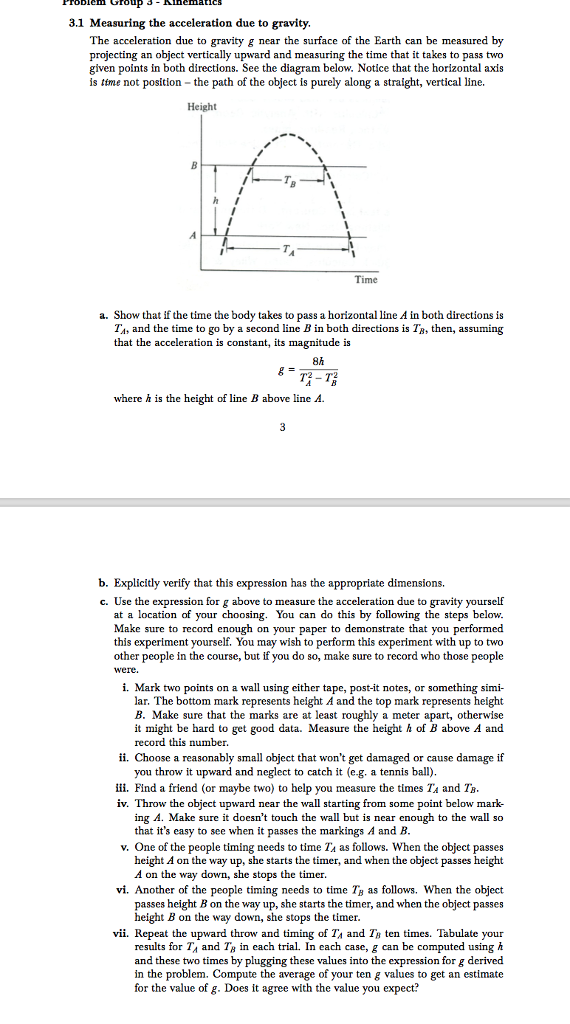

You may need to adjust the microphone volume up to increase the signal or down to decrease the noise. Hit the Record button (button with the red circle) and tap the aluminum foil with your finger a few times, to make sure you can see the sound being graphed on the screen. Make sure Audacity is up on your computer. Place the computer close to (but not touching) the aluminum foil. Place a piece of aluminum foil on the floor.

Fill in the distance in the data table above.

The other person should use a meter stick to measure the distance from the ground to each washer. One person should stand up and dangle the string so that it hangs down straight and so that the metal weight on the bottom is just touching the ground. Your lab kit should include a long string with washers tied to it. Data Table: Distance (in cm) distance Time (in sec) 1. You will use the microphone on your computer to accurately measure the time it takes for washers to fall different distances. Key Concepts: Velocity = change in distance / change in time Acceleration = change in velocity / change in time Gravity accelerates all objects at the same rate (regardless of mass) For an object that starts from rest and then accelerates at a constant rate g, the distance it travels after time t is given by: d = 1 2 gt 2 Part 1 Distance versus Time for a Falling Object In this first part you will verify that a falling object obeys the formula for motion under constant acceleration and will also measure what that acceleration (g) is. This will allow us to see how distance traveled by a falling object varies with time, to determine the magnitude of gravitational acceleration, and to show that heavy and light objects fall at the same rate. We will use a microphone and computer to accurately measure short time intervals. As an object begins to fall, it moves faster and faster (its velocity increases) due to the acceleration caused by the Earth s gravity. 1 Acceleration of Gravity Lab Basic Version In this lab you will explore the motion of falling objects.


 0 kommentar(er)
0 kommentar(er)
